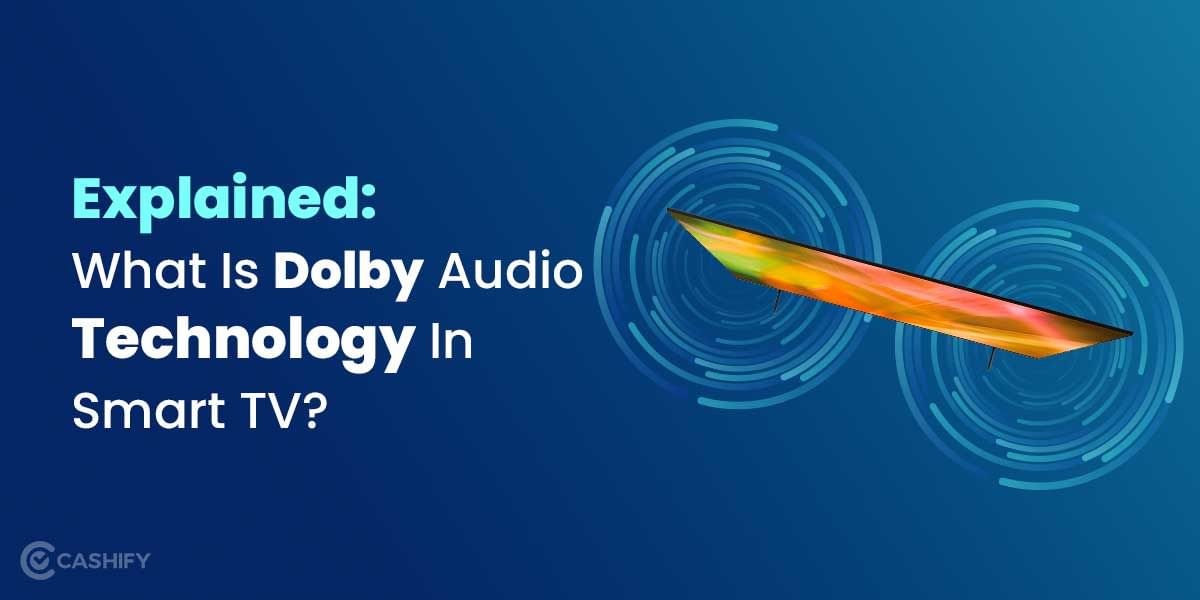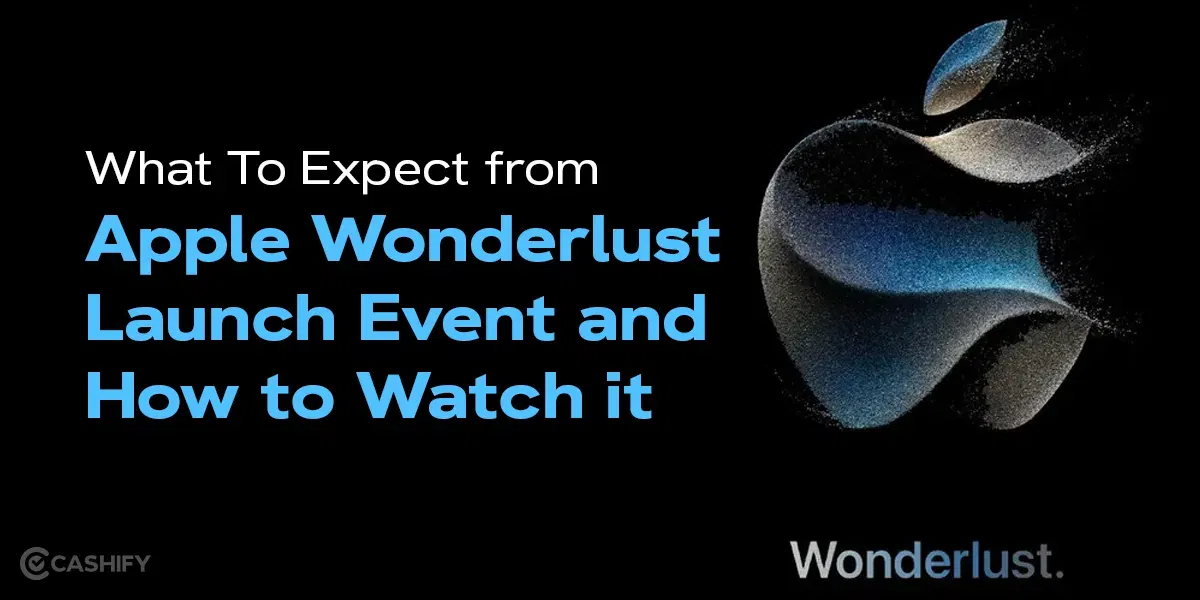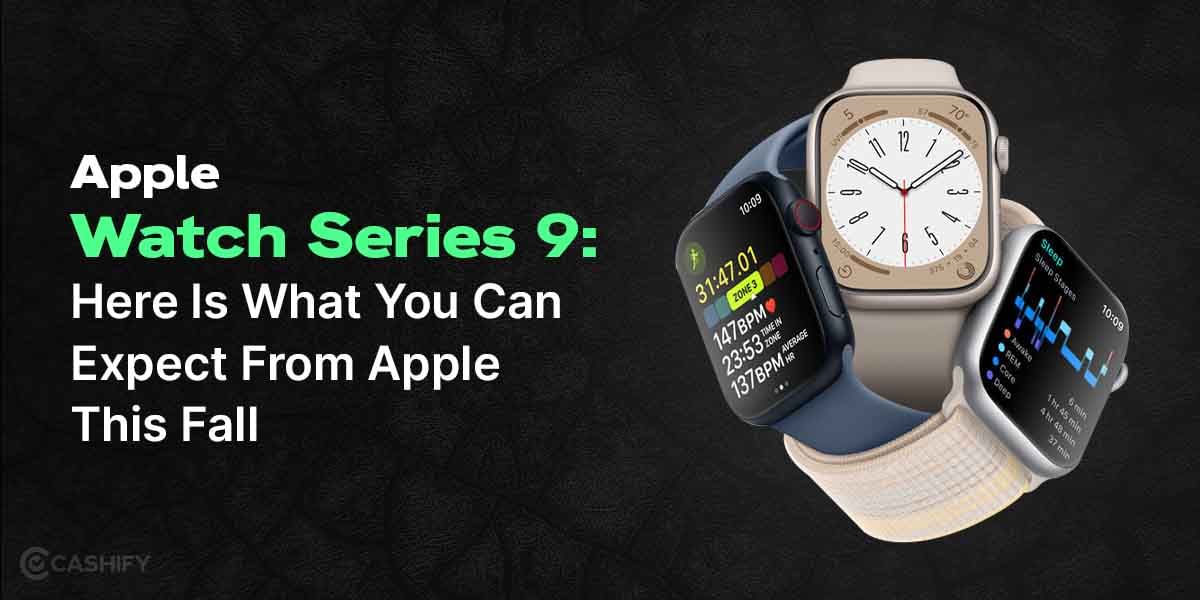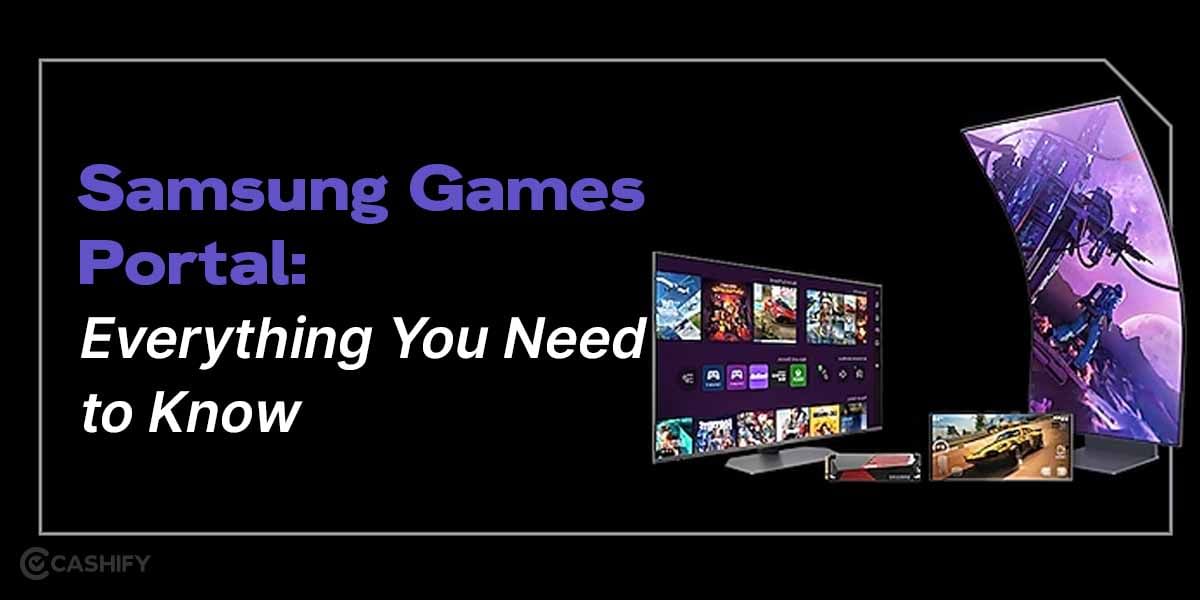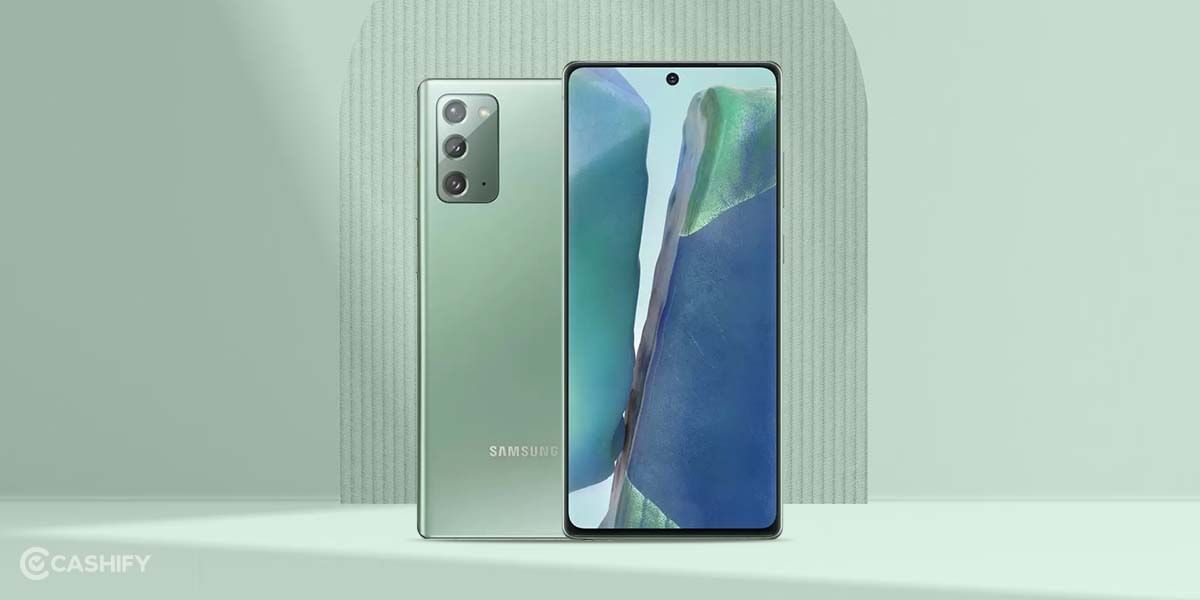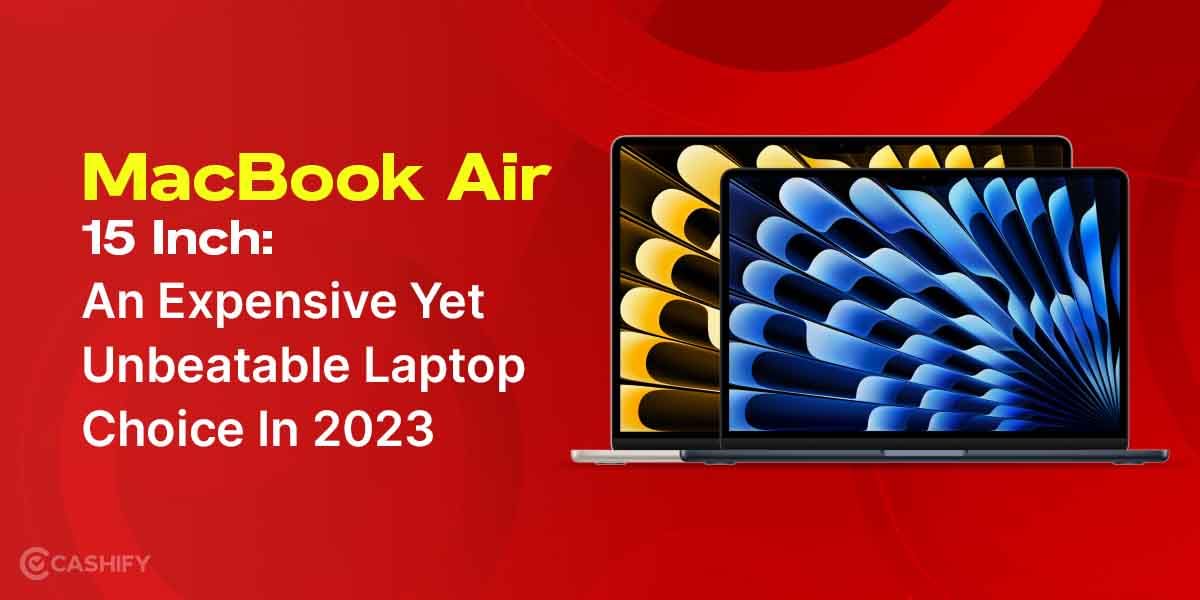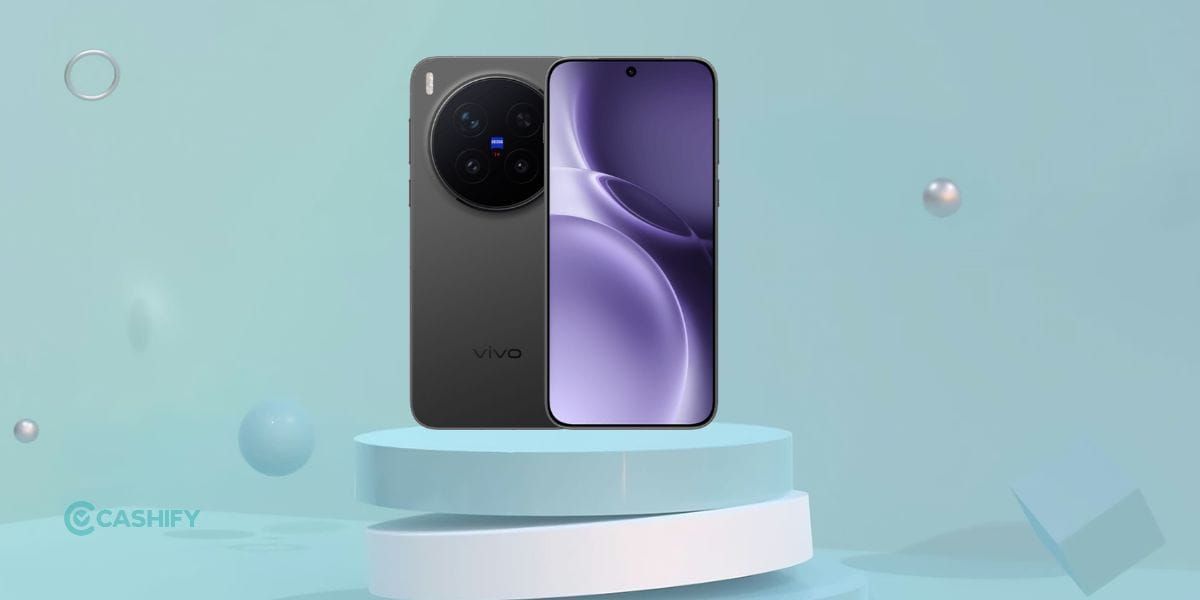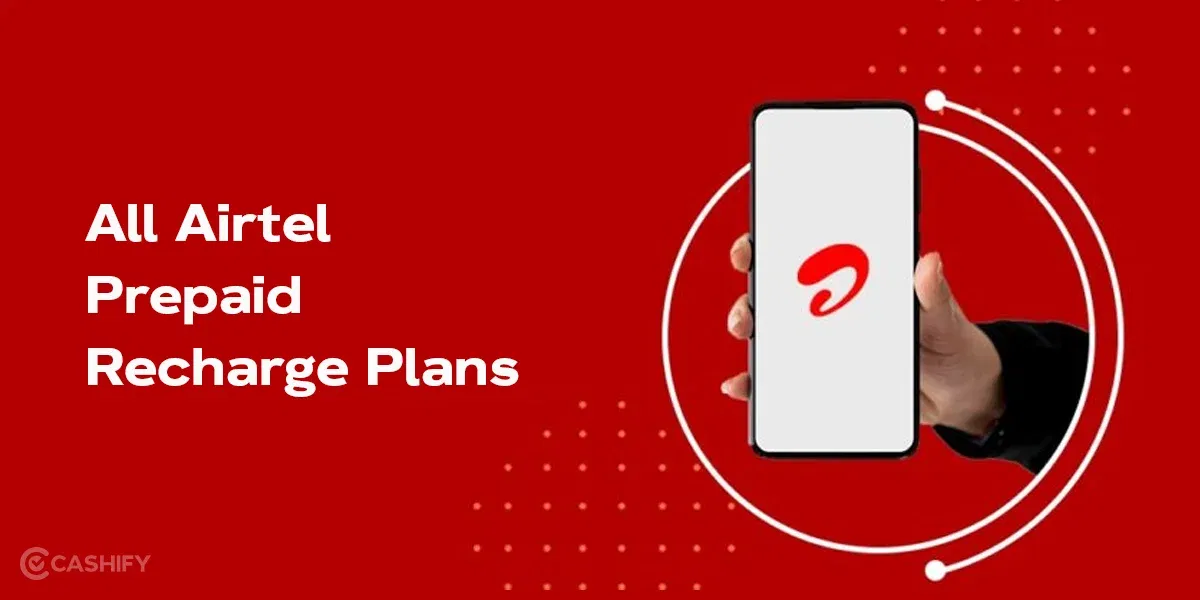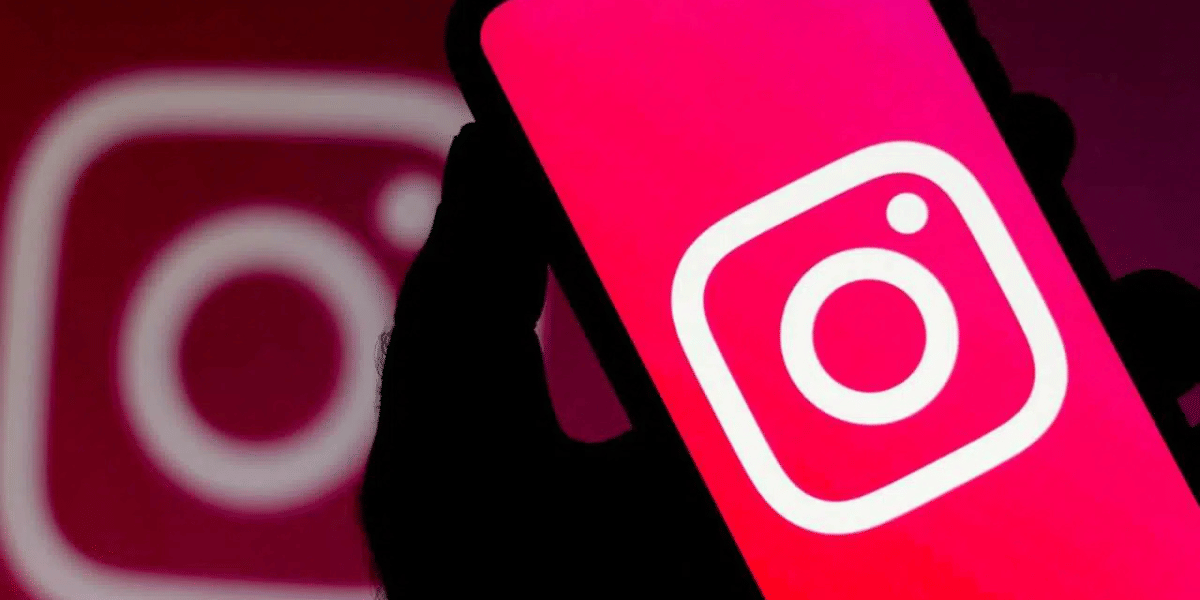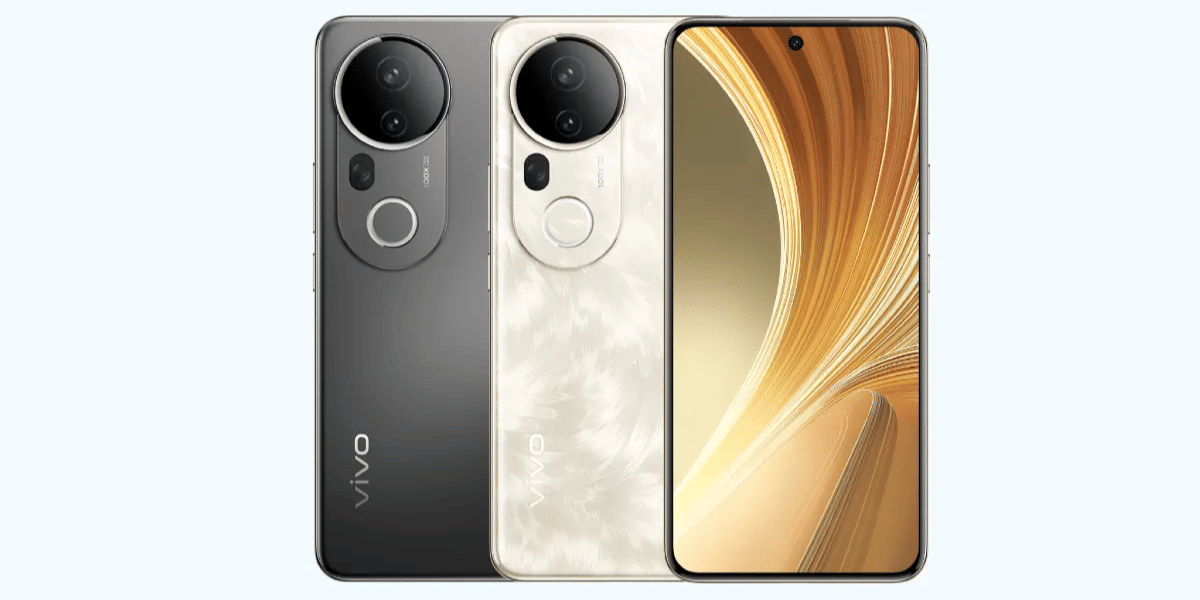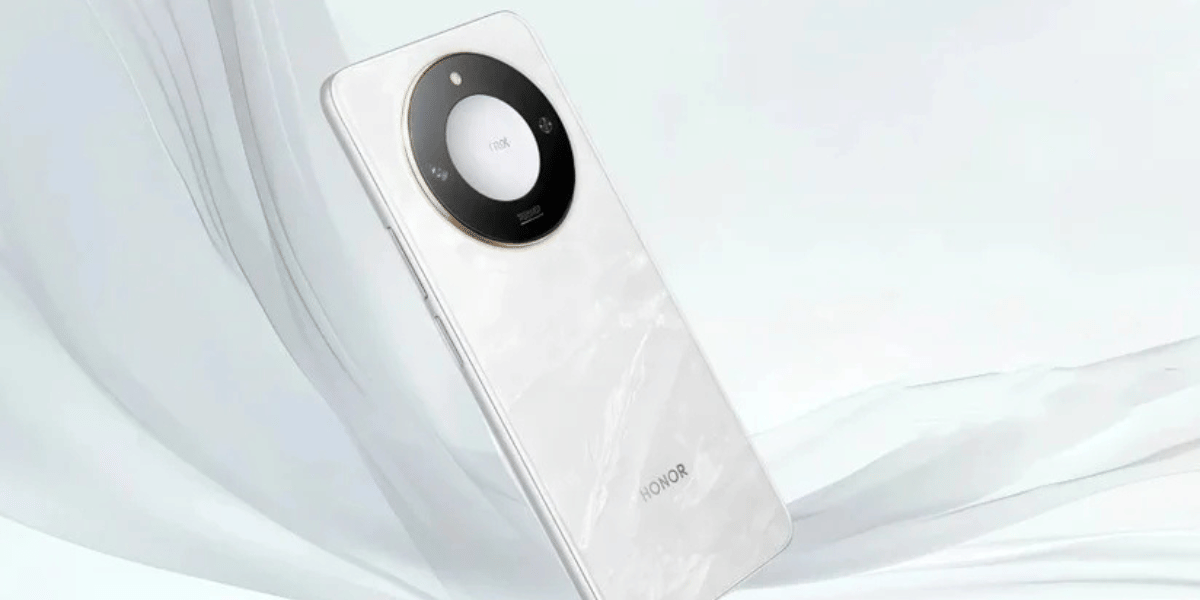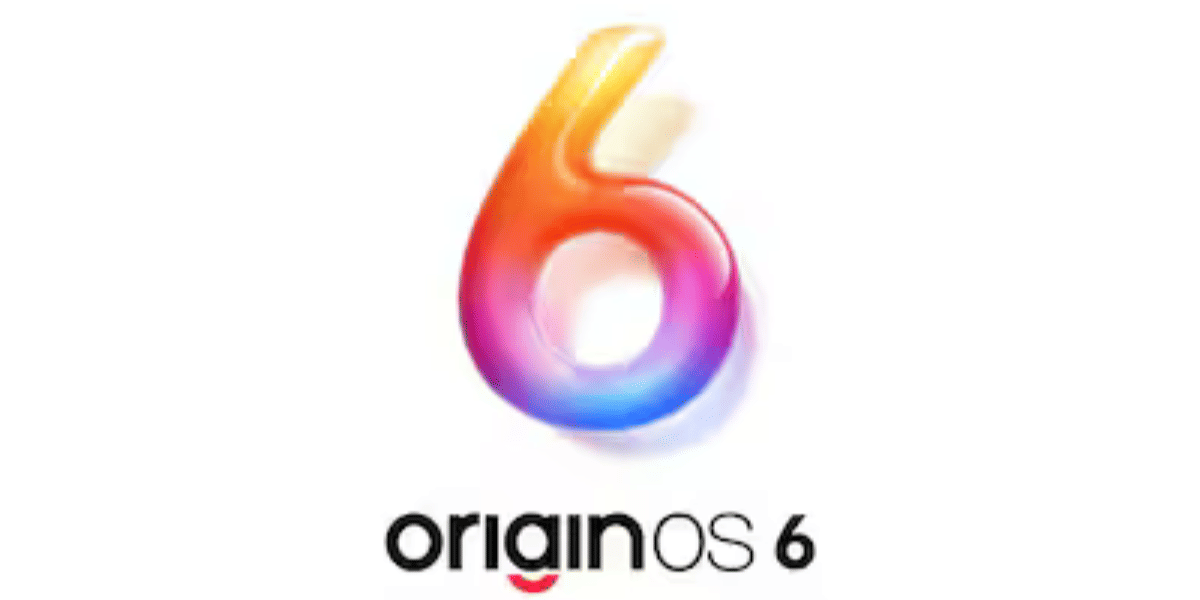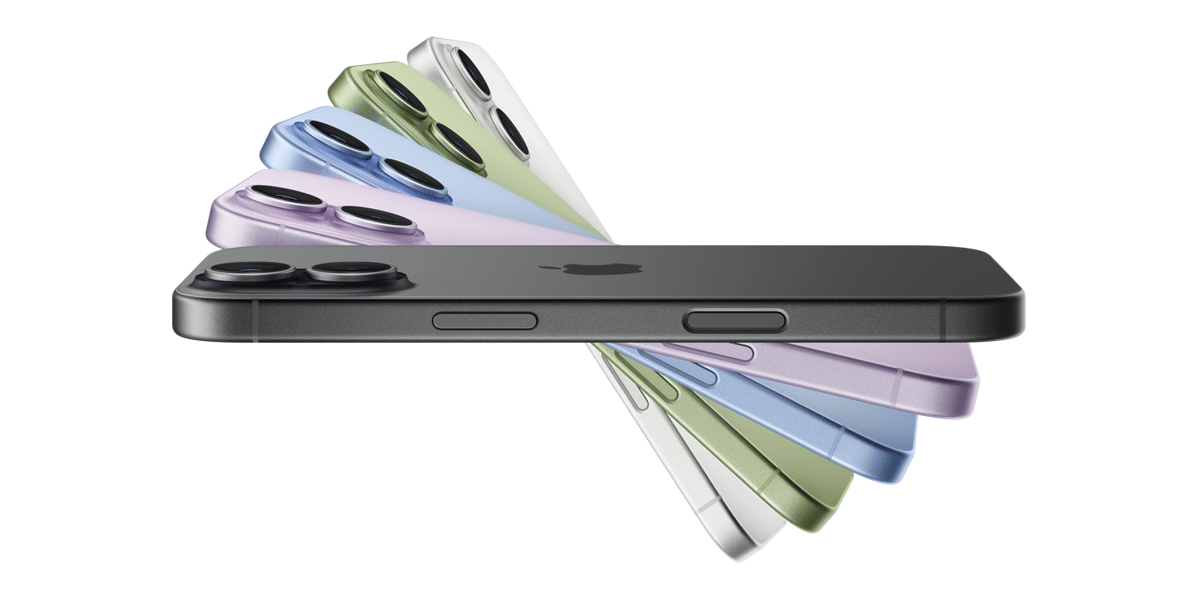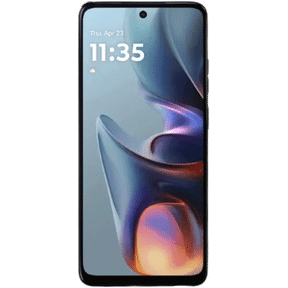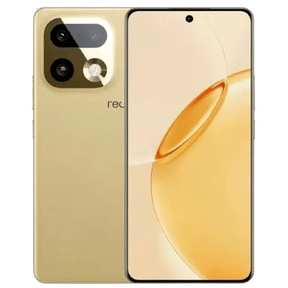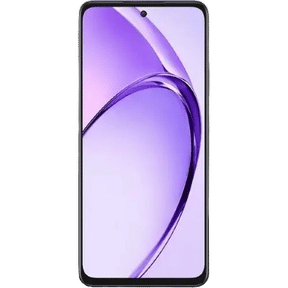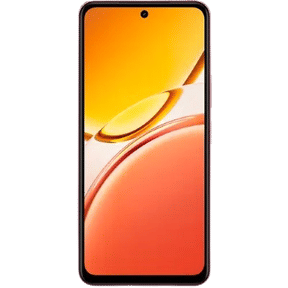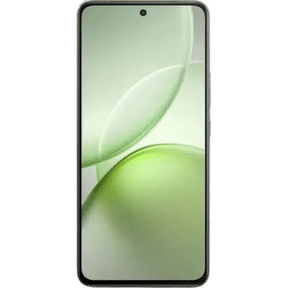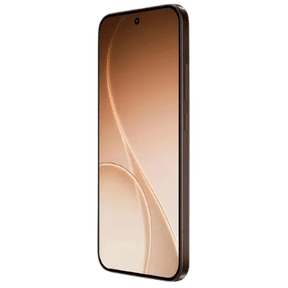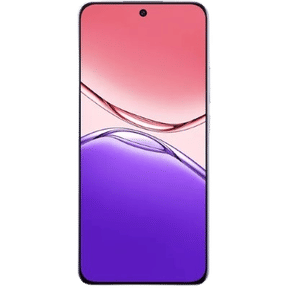The year 2022 marks the 15th anniversary of the first iPhone. Each year since then, the Apple iPhone has gotten an inclusive upgrade and has shaped the evolution of the iPhone. These updates include more prominent and better features for us to work more productively. The iPhone has come a long way since its first release and has revolutionized the tech industry for what it stands now.
At first, we just had a ‘phone’, and then in 2007 came the iPhone, which revolutionized everything. Since then, many iterations have been done until the latest iPhone 13 series. So let’s talk about the history of iPhones and how the iPhone helped in shaping the smartphone industry as we see it now.
Also Read: 7 Little-Known iPhone Features That Are Too Cool To Be Missed
Evolution Of The Apple iPhone
The 1st Gen iPhone:
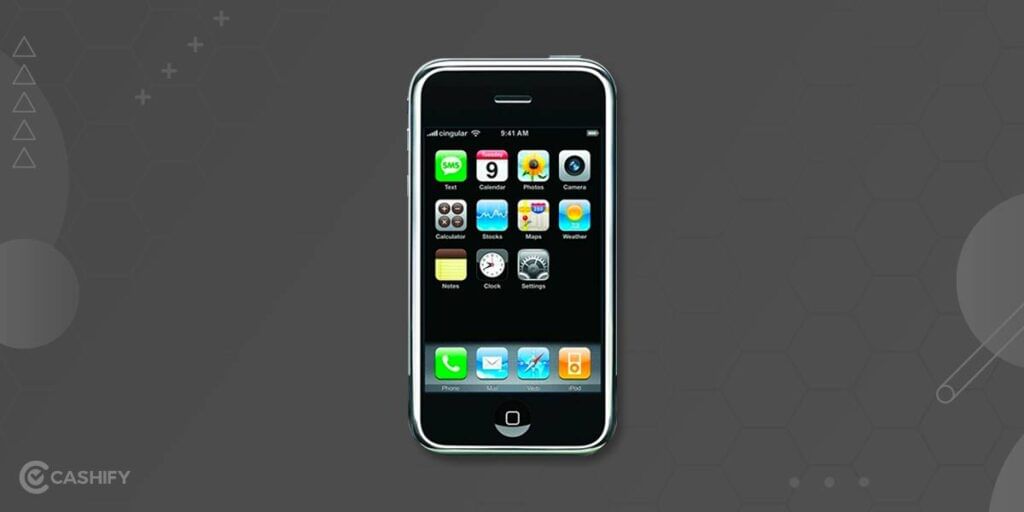
It all started with Steve Jobs’ vision of combining “an iPod, a phone, and an Internet Communicator”. The first iPhone was unveiled at the MacWorld on the 9th of January 2007. And it shook the whole mobile phone industry upside down. It came with a dual-tone design, 3.5” multi-touch screen, and 4/8 gigabyte storage options for the price tag commencing from $499 (Rs. 55,000 at that time)
The 1st Gen iPhone set the tone for cornered edges, a flat front, and a flexible user interface. As the App Store wasn’t even coined back then, It was launched with web applications in mind. It had a back camera of 2 MP, which was only able to take pictures and not videos.
iPhone 3G and 3Gs
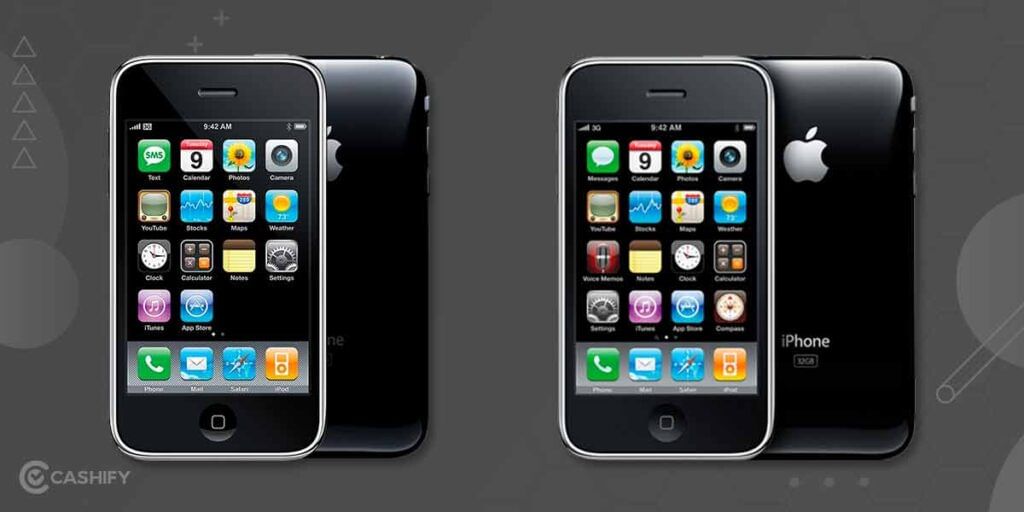
The iPhone 3G was introduced as the sequel to the original iPhone and didn’t have major changes. Apple skipped 2, as this sequel supported 3G connectivity, instead of Edge. The iPhone OS 2 was the major highlight for this smartphone and the AppStore was launched with 500 applications along with it.
The iPhone 3Gs was the first-ever ‘S’ update to the iPhone lineup, the S here stood for Speed and the 3G and 3Gs were a lookalike. The camera got a slight upgrade to 3 MP. The iPhone OS 3 inaugurated abilities for the iPhone to cut, copy, paste, and record videos. Voice Control was also added along with it, incepting the prerequisites for Siri.
Also Read: QLED Vs OLED: Which Technology Is Better? Explained
iPhone 4 and 4s
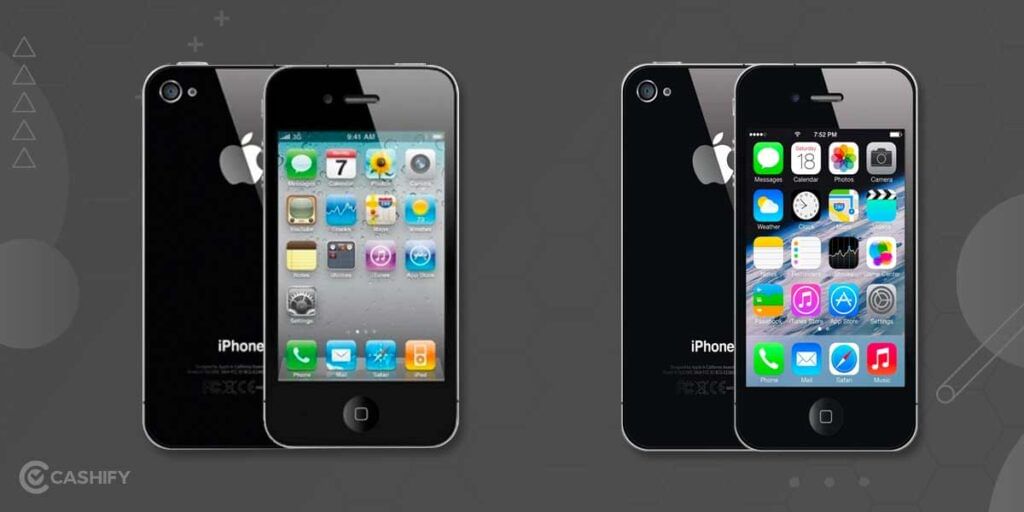
The iPhone 4 came with a major design revamp, with squared-off edges and flat sides making it the thinnest smartphone on the planet. This in my opinion is the greatest iPhone evolution. It came with an all-glass panel, stainless-steel sides, and a Retina display. It was the first iPhone to have the Apple-branded Silicon “A4” and a selfie camera.
In the iPhone 4S, the S stood for the inclusion of “Siri” in the iPhone. It was a subtle refinement, the Antena layout was upgraded to overcome the network issue iPhone 4 faced. It was the year when the iPhone OS turned into iOS, and the camera went from 5 MP to 8 MP. To justify the 1080p video recording, a 64 GB storage option was added. Surprisingly, the memory was kept at 512 MB only.
iPhone 5, 5S and 5C
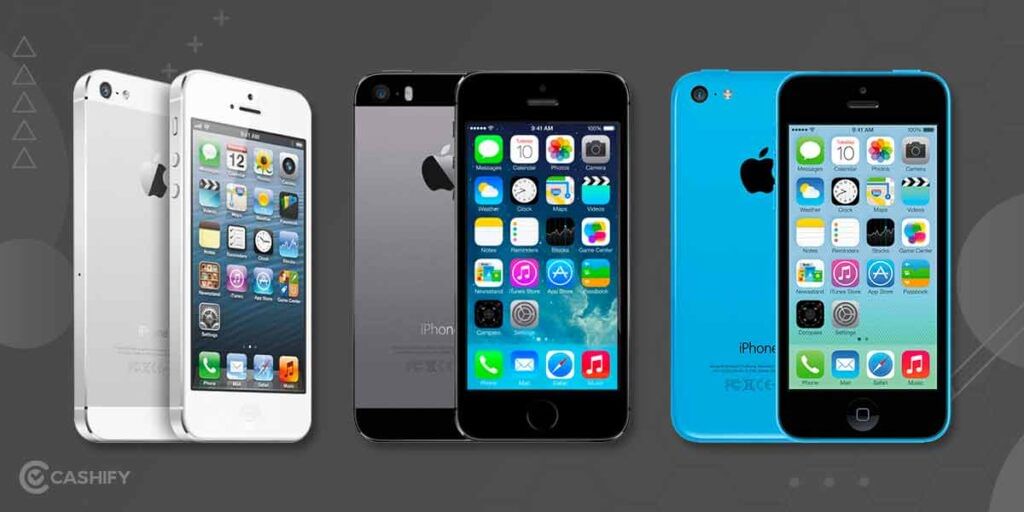
iPhone 5 commenced the inflation in screen size, launching with a 4-inch display. This iPhone introduced LTE connectivity and a lightning port to the world. This one was all metal and way more durable, than all the previous iPhone models. The camera module was retained as it is but the RAM was amped-up to 1 GB.
Next year the iPhone 5S and iPhone 5C were launched. The iPhone 5s featured the newer A7 processor and added many major features such as Touch ID, dual-flash, and slow-motion video. While the iPhone 5C was made for a younger audience targeting an affordable price bracket. The “C” in the iPhone 5C stood for colours. It was an iPhone 5 repackaged with a plastic shell, targeted toward the younger audience as an affordable option offered in 4 different colours.
iPhone 6 and 6 Plus
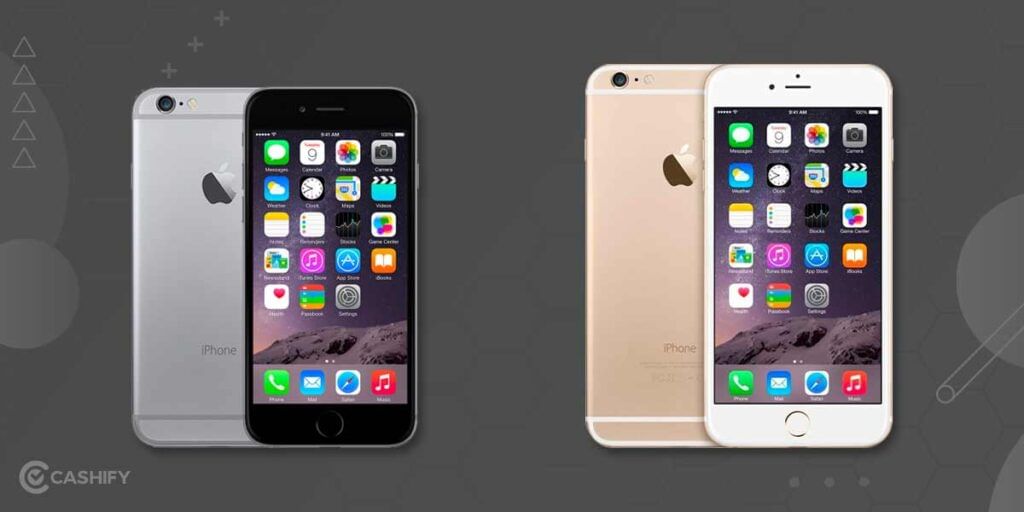
iPhone 6 was the best-selling iPhone of all time, mainly because of its sleeker design and larger display size. The edges were more rounded this time, and the display size was upgraded to a massive 4.7 inches. It started the tradition of the camera bump, in the smartphone market.
The iPhone 6 Plus was the first “Plus model” Apple ever introduced and this started the evolution of larger iPhones. It continued the trend by having an immersive 5.5-inch display, 128 GB storage option was also made available with it. The power button moved down from the top to the right side, for reachability.
Also Read: Smartphone Buying Guide
iPhone 6s and 6s Plus
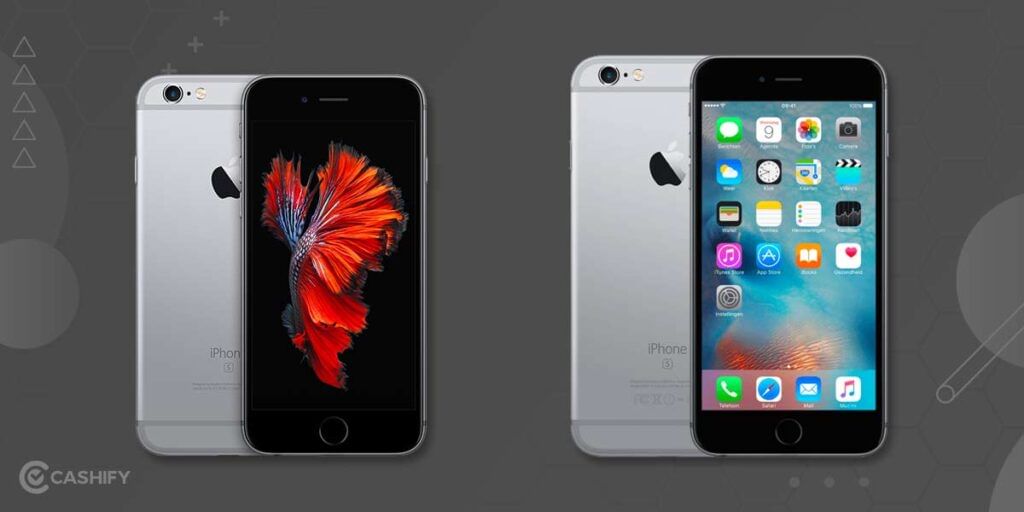
Despite continuing in the same unibody, to turn over a new leaf the 6s series made major incremental changes to the iPhone lineup. With the iPhone 6s and 6s Plus, Apple addressed the hardware issues and reinforced the 7000 series aluminium. The 6S series featured 2 GB of RAM and the A9 Bionic chipset. Taptic engine and 3D touch were also introduced along with it. It was the first iPhone to have the 12 MP camera, which is continued even in the latest iPhone models.
iPhone 7 and 7 Plus
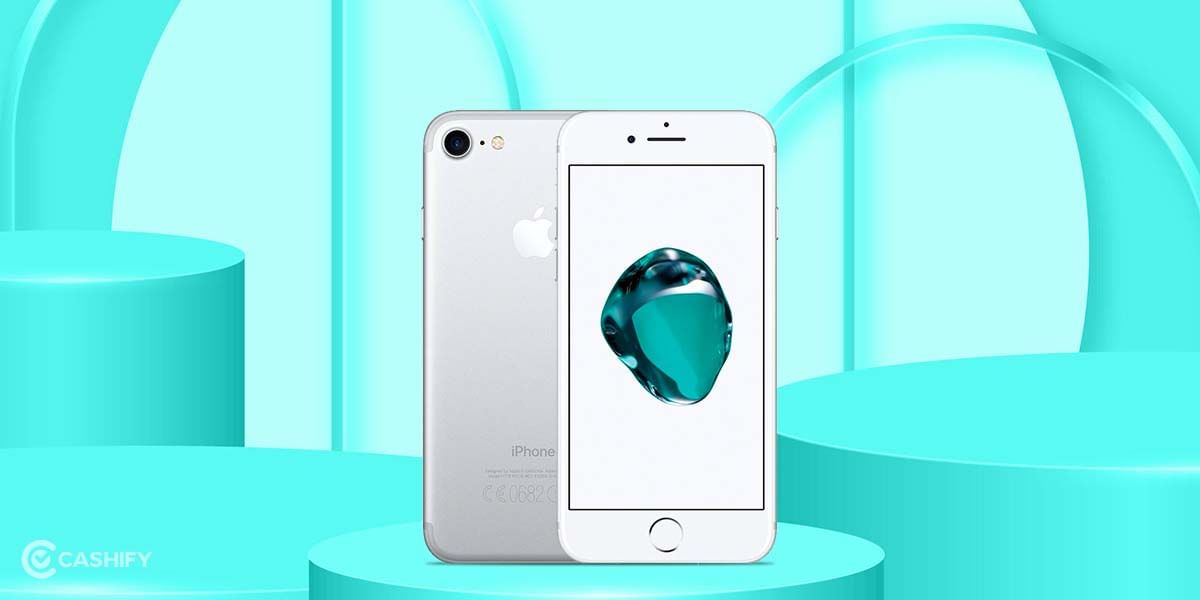
iPhone 7 was an important evolution in the iPhone line-up, it was equipped with a Plus exclusive dual-camera setup on the back. The secondary 12 MP telephoto sensor utilized optical zoom and provided depth effects. Apple finally dropped the 16 GB base model option, with the iPhone 7 and 7 Plus, starting at 32 GB of storage and ranging up to 256 GB.
With these iPhone models, Apple removed the physical home button, and 3.5-mm Headphone jack while introducing the force-touch Home Button. To make up for the removal of the headphone jack the Airpods were introduced as well. Partnering with (RED) organization, (PRODUCT)RED accessories and models were also introduced this year with the 7 series iPhones.
iPhone 8 and 8 Plus
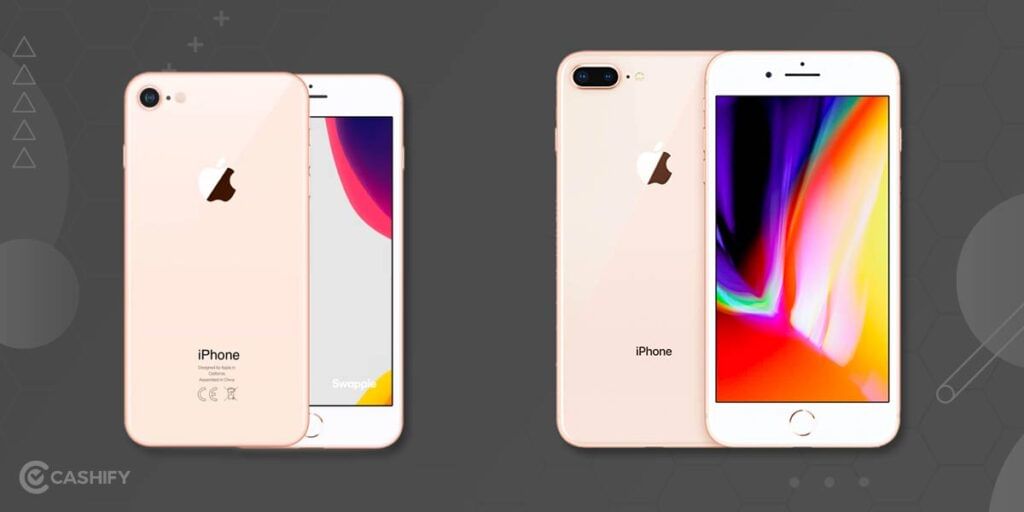
The 8 series iPhones were just a subtle upgrade from the 7 series, as the evolution was just around the corner. The iPhone 8 and 8 Plus included some tweaks here and there. These included the inclusion of a glass back panel, wireless charging, and True-tone display technology.
iPhone X, XS, and XS Max
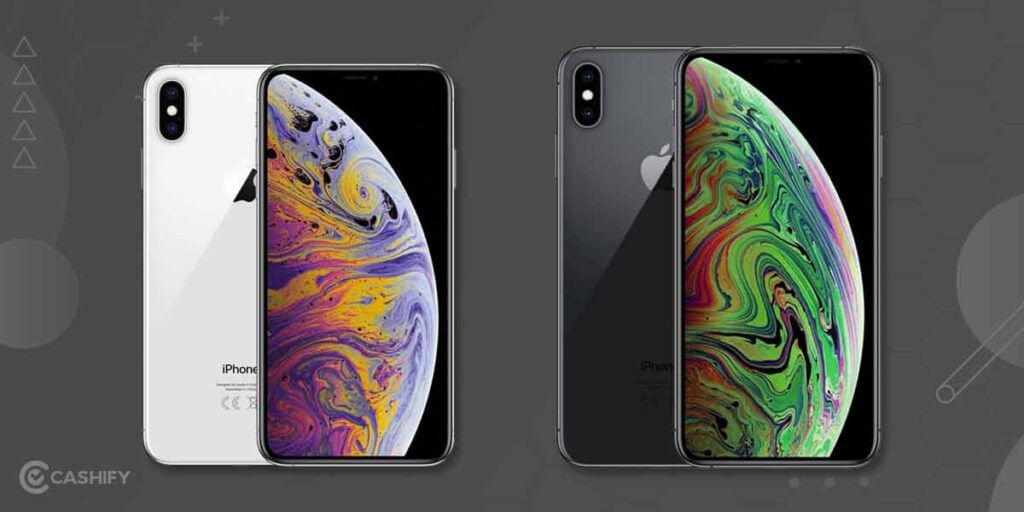
Skipping the 9, the iPhone X was released in 2017 to celebrate the 10th anniversary of the iPhone. The iPhone X did a major revamp to the iPhone design language. This was a major evolution for the iPhone and was the first major change after Steve Jobs’s demise. The iPhone X was the first iPhone ever to feature an OLED panel and Portrait mode selfies. Apple also got rid of TouchID Home Button in making a bezel-less display. Hence to forthcome, Apple launched FaceID, a more convenient facial authentication system. They knew what they were selling and thus was the price tag of Rs. 89,000.
The next year Apple announced the XS and XS Max as a refinement and a spec bump over the iPhone X. Although the XS had the same design and same size as the iPhone X, the A12 bionic provided increased efficiency and more horsepower to multi-task. A new Max model, iPhone XS Max was also added to the lineup with an immersive 6.46” display, to deliver more screen real estate.
Retina Lineup: iPhone XR and 11
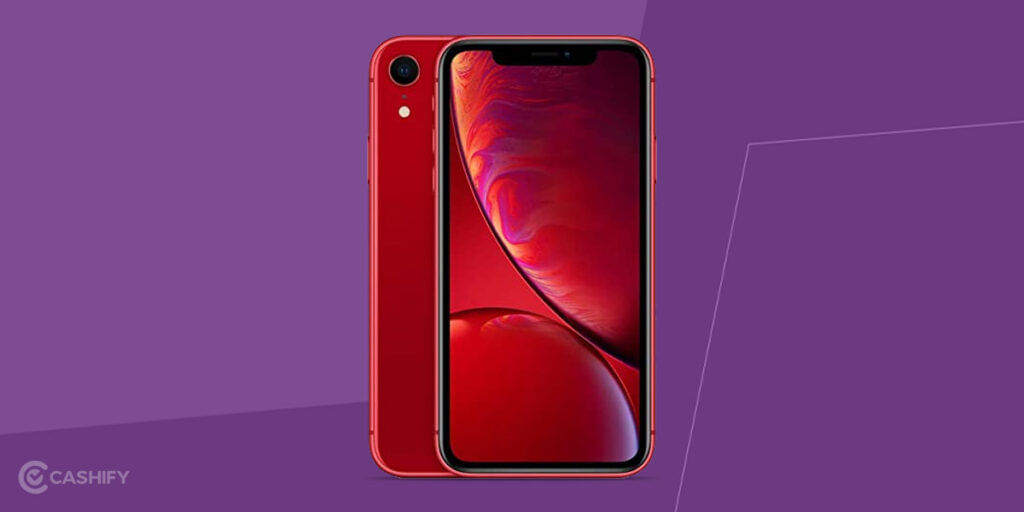
The iPhone XR was also announced along with XS and XS Max as a budget option. The R in XR stood for Retina display, and it also had a single rear camera to make a distinction from premium models. It came with way more colours to target a younger audience.
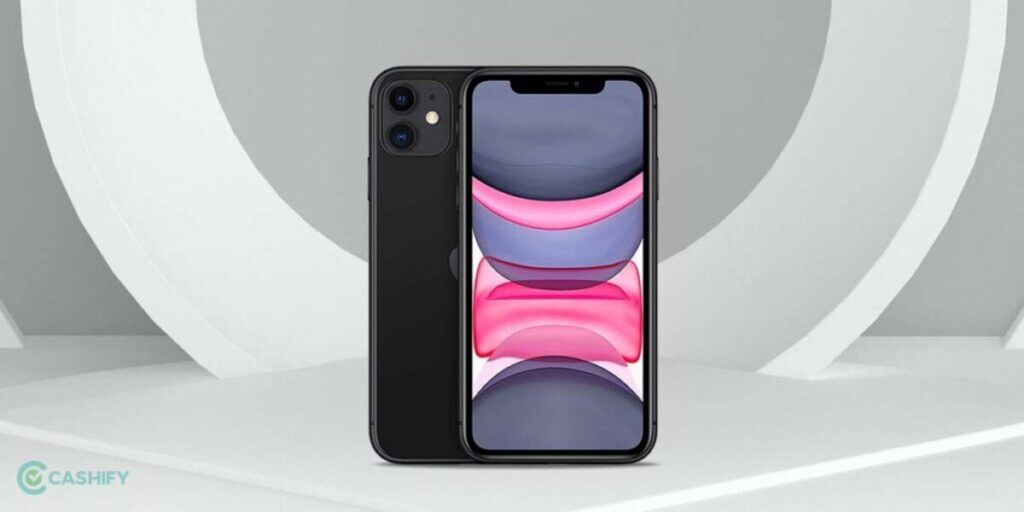
The iPhone 11 was introduced as a year-on-year upgrade from the budget offering, iPhone XR. The device featured the same 6.1” Retina display and refreshing 6 six crisp colours. The most appreciative inclusion was the secondary 12 MP camera on the back, with which Apple hit the charts again.
Also Read: How To Transfer Data From iPhone To iPhone
Regular Lineup: iPhone 12 and 13
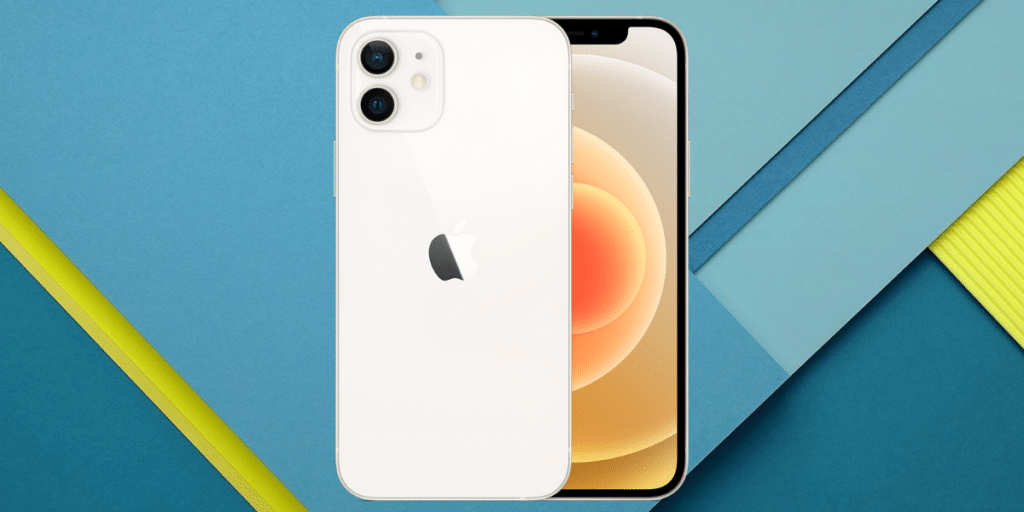
The iPhone 12 was a significant update over the 11, coming with lots of enhancements such as an OLED display, 5G connectivity, squared-off edges, and a 5 nm-based A14 bionic. Apple also made a risky decision with this lineup, removing charging brick from the box in the name of environmental precaution.
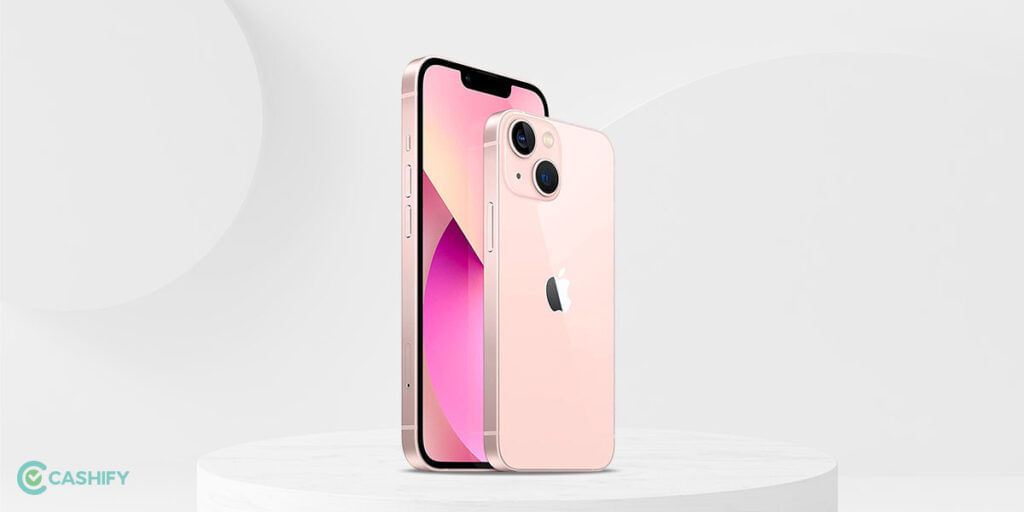
The iPhone 13 is a subtle upgrade over the 12 series, coming with a reoriented camera setup and a smaller notch. Battery life peaked heights with this model, also its base model offers double the storage (128 GB) for the same iPhone 12 introductory price.
Also read: iOS 16 Features: Lock Screen, Maps, Everything You Need To Know
Pro Lineup: 11,12 and 13 Pro
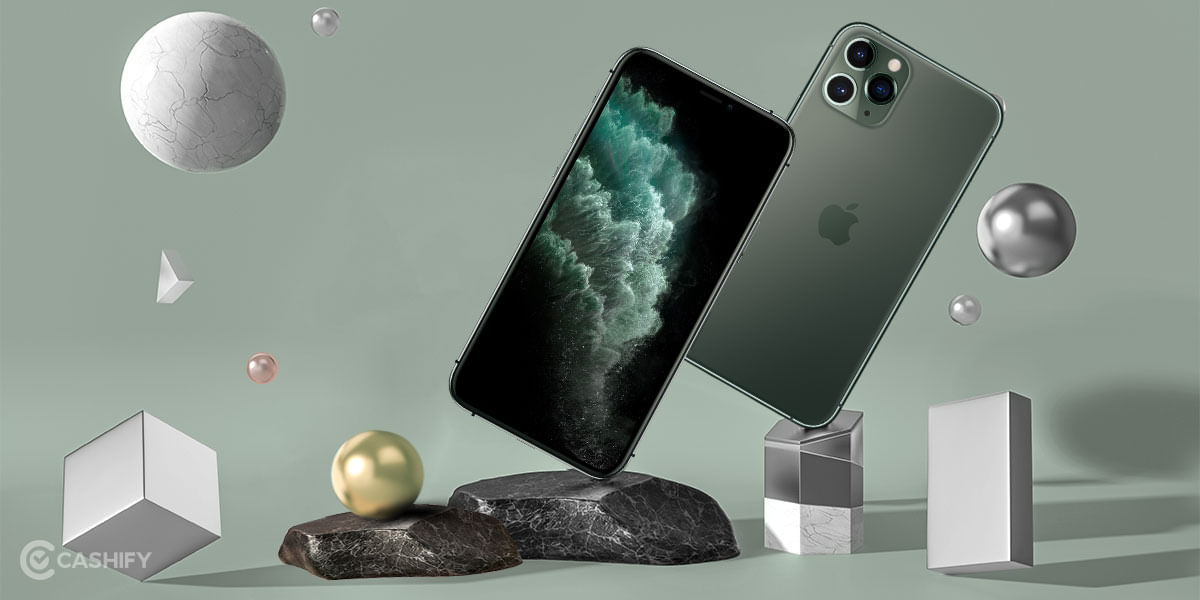
iPhone 11 Pro – a compact-sized phone with a top-notch display and cameras. It came with a 5.8” Super Retina XDR display and featured three 12 MP rear camera lenses – wide, ultra-wide, and telephoto. Apple added the new nomenclatures this time, to distinguish their lineup better.
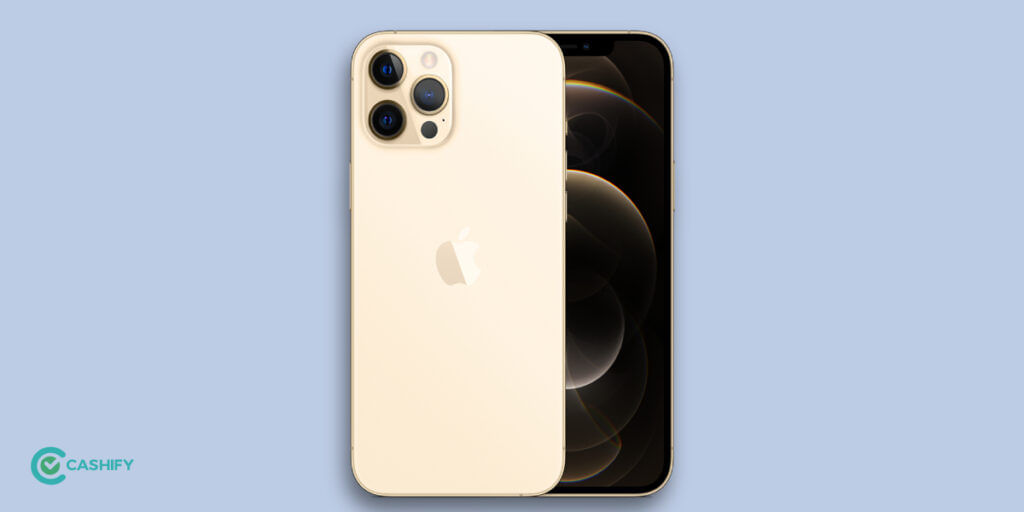
The iPhone 12 Pro was back to the 6.1” screen once again. This one had an additional sensor than the 11 Pro called a LiDAR scanner which in turn enhanced zoom range and improved Night Mode. Pro-Raw and Dolby Vision were also added to enable superior pro-editing and video shooting capabilities.
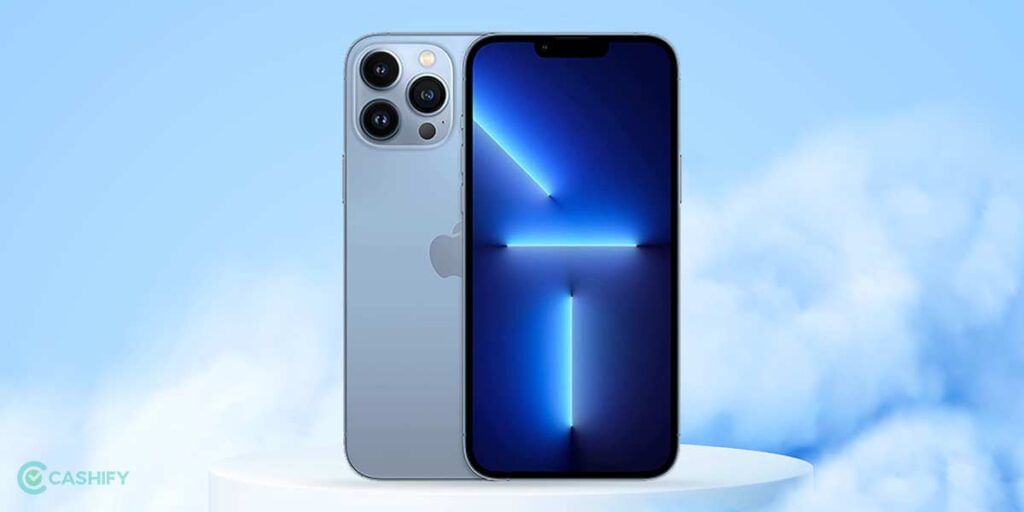
iPhone 13 Pro also featured the 6.1-inch Super Retina XDR display but with a 120 Hz ProMotion LTPO display this time. The storage options were also bumped up to 1 TB to address the Pro-Res format.
Also read: Top 5 iPhone 12 Tips And Tricks To Improve Your Experience
Pro Max Lineup: 11,12 and 13 Pro Max
iPhone 11 Pro Max was the largest and most premium smartphone of 2019. It had a gigantic 6.5-inches Super Retina XDR display. The size was the only deciding factor between the Pro and Pro Max models, as every other feature was exactly the same.
The iPhone 12 Pro Max once again expanded the display horizon, making it 6.7-inches. The major enhancement the 12 Pro series brought to the table was in terms of raw performance and low-light photography. It also featured a 5x zoom and LiDAR sensor for the first time.
Apple tried to part the Pro series from regular models with the 13 series. Compared to the regular models, the iPhone 13 Pro and Pro Max also get an additional GPU core, for a total of 5. And the battery also increased, offering 28 hours of video playback.
Mini Lineup: iPhone 12 and 13 Mini
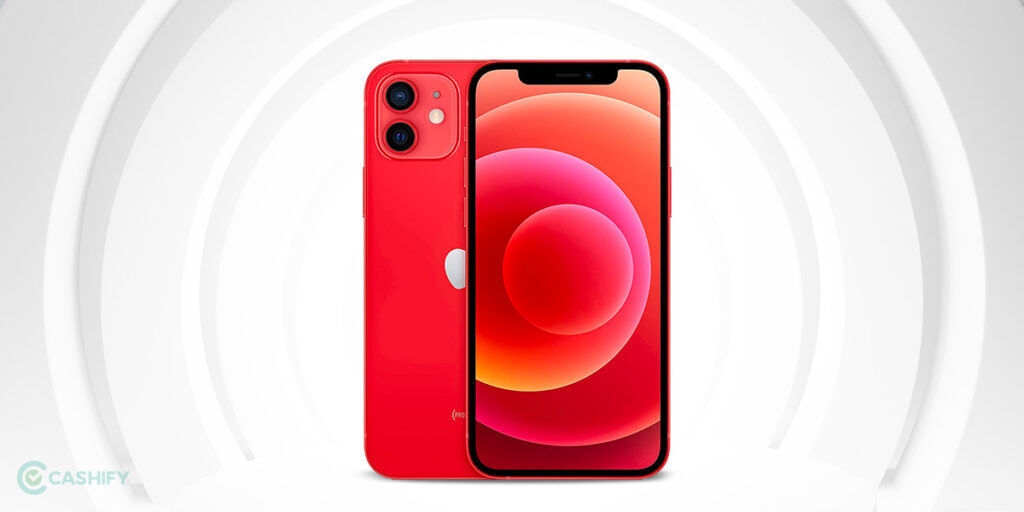
The iPhone 12 mini was power-packed with the same feature set as the iPhone 12 but in a small and compact size, coming at 5.4 inches. The Mini lineup is an engineering marvel and is one of the controversial decisions for the evolution of the iPhone. The iPhone 12 mini featured the same OLED display, cameras, and performance as the regular models in such a small chassis.
Mirroring the design and display size of the iPhone 12 Mini and replicating the features of the iPhone 13, the 13 Mini delivers better performance and battery life, as compared to the 12 Mini. Apple also addressed the battery drain issue with this one, which prohibited many users to switch to a compact-sized iPhone.
SE Lineup: SE 2016, 2020, and 2022
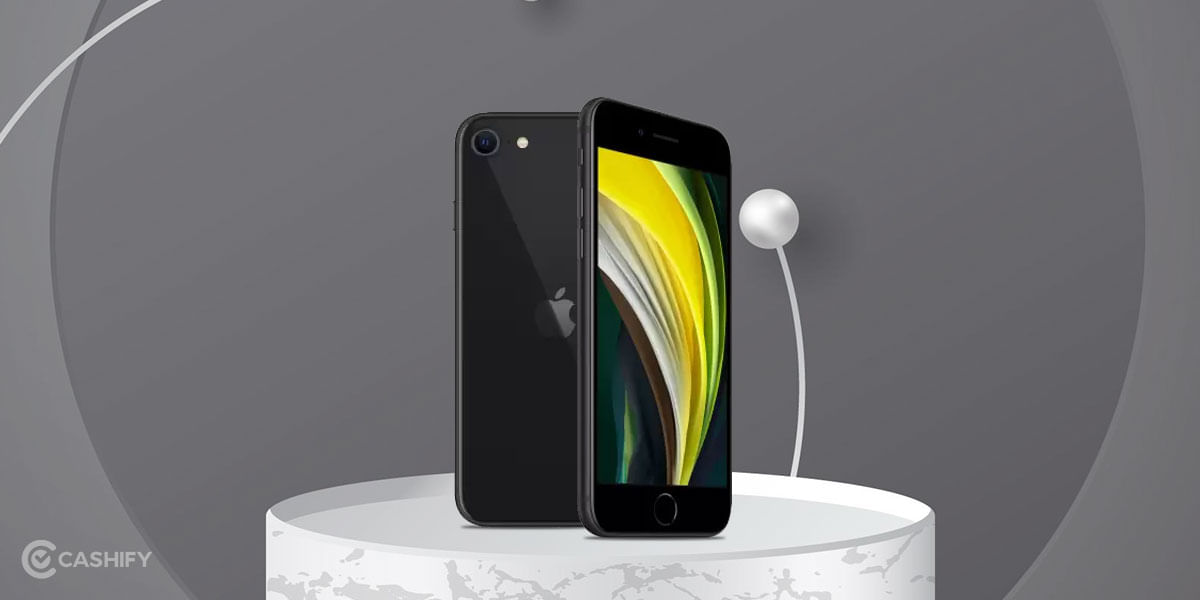
The SE stood for special or small edition for the iPhone, the 1st gen SE was a 5s with a camera and the chipset was taken from 6s. This started the evolution of the SE series of iPhones and brought back the compact 4” screen size and offered 12 MP cameras to the budget. Despite being 6 years old, it is supported by the latest iOS 15 update.
iPhone SE 2020 revamped the iPhone 8 and included an A13 bionic, an advanced camera system with Portrait mode, Depth Control, and high-definition video. It also offered the nostalgic 4.7” Retina HD display and Touch ID for a price tag of Rs. 39,000.
The Phone SE 2022 is a slight upgrade over iPhone SE 2020, getting an A15 Bionic chip and 5G, coming with a surge in price at Rs. 43,000.
Also Read: 10 Easy Tips and Tricks For Better Smartphone Photography
Cashify is your one-stop destination for selling old gadgets. Sell phone online or Recycle old phone from your doorsteps.





